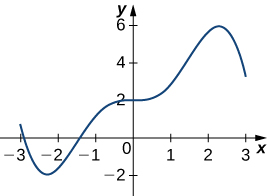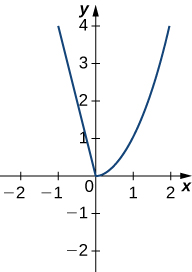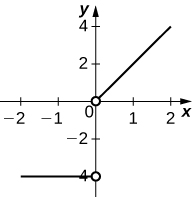3.10: Capítulo 3 Ejercicios de revisión
- Page ID
- 116631
\( \newcommand{\vecs}[1]{\overset { \scriptstyle \rightharpoonup} {\mathbf{#1}} } \)
\( \newcommand{\vecd}[1]{\overset{-\!-\!\rightharpoonup}{\vphantom{a}\smash {#1}}} \)
\( \newcommand{\dsum}{\displaystyle\sum\limits} \)
\( \newcommand{\dint}{\displaystyle\int\limits} \)
\( \newcommand{\dlim}{\displaystyle\lim\limits} \)
\( \newcommand{\id}{\mathrm{id}}\) \( \newcommand{\Span}{\mathrm{span}}\)
( \newcommand{\kernel}{\mathrm{null}\,}\) \( \newcommand{\range}{\mathrm{range}\,}\)
\( \newcommand{\RealPart}{\mathrm{Re}}\) \( \newcommand{\ImaginaryPart}{\mathrm{Im}}\)
\( \newcommand{\Argument}{\mathrm{Arg}}\) \( \newcommand{\norm}[1]{\| #1 \|}\)
\( \newcommand{\inner}[2]{\langle #1, #2 \rangle}\)
\( \newcommand{\Span}{\mathrm{span}}\)
\( \newcommand{\id}{\mathrm{id}}\)
\( \newcommand{\Span}{\mathrm{span}}\)
\( \newcommand{\kernel}{\mathrm{null}\,}\)
\( \newcommand{\range}{\mathrm{range}\,}\)
\( \newcommand{\RealPart}{\mathrm{Re}}\)
\( \newcommand{\ImaginaryPart}{\mathrm{Im}}\)
\( \newcommand{\Argument}{\mathrm{Arg}}\)
\( \newcommand{\norm}[1]{\| #1 \|}\)
\( \newcommand{\inner}[2]{\langle #1, #2 \rangle}\)
\( \newcommand{\Span}{\mathrm{span}}\) \( \newcommand{\AA}{\unicode[.8,0]{x212B}}\)
\( \newcommand{\vectorA}[1]{\vec{#1}} % arrow\)
\( \newcommand{\vectorAt}[1]{\vec{\text{#1}}} % arrow\)
\( \newcommand{\vectorB}[1]{\overset { \scriptstyle \rightharpoonup} {\mathbf{#1}} } \)
\( \newcommand{\vectorC}[1]{\textbf{#1}} \)
\( \newcommand{\vectorD}[1]{\overrightarrow{#1}} \)
\( \newcommand{\vectorDt}[1]{\overrightarrow{\text{#1}}} \)
\( \newcommand{\vectE}[1]{\overset{-\!-\!\rightharpoonup}{\vphantom{a}\smash{\mathbf {#1}}}} \)
\( \newcommand{\vecs}[1]{\overset { \scriptstyle \rightharpoonup} {\mathbf{#1}} } \)
\( \newcommand{\vecd}[1]{\overset{-\!-\!\rightharpoonup}{\vphantom{a}\smash {#1}}} \)
\(\newcommand{\avec}{\mathbf a}\) \(\newcommand{\bvec}{\mathbf b}\) \(\newcommand{\cvec}{\mathbf c}\) \(\newcommand{\dvec}{\mathbf d}\) \(\newcommand{\dtil}{\widetilde{\mathbf d}}\) \(\newcommand{\evec}{\mathbf e}\) \(\newcommand{\fvec}{\mathbf f}\) \(\newcommand{\nvec}{\mathbf n}\) \(\newcommand{\pvec}{\mathbf p}\) \(\newcommand{\qvec}{\mathbf q}\) \(\newcommand{\svec}{\mathbf s}\) \(\newcommand{\tvec}{\mathbf t}\) \(\newcommand{\uvec}{\mathbf u}\) \(\newcommand{\vvec}{\mathbf v}\) \(\newcommand{\wvec}{\mathbf w}\) \(\newcommand{\xvec}{\mathbf x}\) \(\newcommand{\yvec}{\mathbf y}\) \(\newcommand{\zvec}{\mathbf z}\) \(\newcommand{\rvec}{\mathbf r}\) \(\newcommand{\mvec}{\mathbf m}\) \(\newcommand{\zerovec}{\mathbf 0}\) \(\newcommand{\onevec}{\mathbf 1}\) \(\newcommand{\real}{\mathbb R}\) \(\newcommand{\twovec}[2]{\left[\begin{array}{r}#1 \\ #2 \end{array}\right]}\) \(\newcommand{\ctwovec}[2]{\left[\begin{array}{c}#1 \\ #2 \end{array}\right]}\) \(\newcommand{\threevec}[3]{\left[\begin{array}{r}#1 \\ #2 \\ #3 \end{array}\right]}\) \(\newcommand{\cthreevec}[3]{\left[\begin{array}{c}#1 \\ #2 \\ #3 \end{array}\right]}\) \(\newcommand{\fourvec}[4]{\left[\begin{array}{r}#1 \\ #2 \\ #3 \\ #4 \end{array}\right]}\) \(\newcommand{\cfourvec}[4]{\left[\begin{array}{c}#1 \\ #2 \\ #3 \\ #4 \end{array}\right]}\) \(\newcommand{\fivevec}[5]{\left[\begin{array}{r}#1 \\ #2 \\ #3 \\ #4 \\ #5 \\ \end{array}\right]}\) \(\newcommand{\cfivevec}[5]{\left[\begin{array}{c}#1 \\ #2 \\ #3 \\ #4 \\ #5 \\ \end{array}\right]}\) \(\newcommand{\mattwo}[4]{\left[\begin{array}{rr}#1 \amp #2 \\ #3 \amp #4 \\ \end{array}\right]}\) \(\newcommand{\laspan}[1]{\text{Span}\{#1\}}\) \(\newcommand{\bcal}{\cal B}\) \(\newcommand{\ccal}{\cal C}\) \(\newcommand{\scal}{\cal S}\) \(\newcommand{\wcal}{\cal W}\) \(\newcommand{\ecal}{\cal E}\) \(\newcommand{\coords}[2]{\left\{#1\right\}_{#2}}\) \(\newcommand{\gray}[1]{\color{gray}{#1}}\) \(\newcommand{\lgray}[1]{\color{lightgray}{#1}}\) \(\newcommand{\rank}{\operatorname{rank}}\) \(\newcommand{\row}{\text{Row}}\) \(\newcommand{\col}{\text{Col}}\) \(\renewcommand{\row}{\text{Row}}\) \(\newcommand{\nul}{\text{Nul}}\) \(\newcommand{\var}{\text{Var}}\) \(\newcommand{\corr}{\text{corr}}\) \(\newcommand{\len}[1]{\left|#1\right|}\) \(\newcommand{\bbar}{\overline{\bvec}}\) \(\newcommand{\bhat}{\widehat{\bvec}}\) \(\newcommand{\bperp}{\bvec^\perp}\) \(\newcommand{\xhat}{\widehat{\xvec}}\) \(\newcommand{\vhat}{\widehat{\vvec}}\) \(\newcommand{\uhat}{\widehat{\uvec}}\) \(\newcommand{\what}{\widehat{\wvec}}\) \(\newcommand{\Sighat}{\widehat{\Sigma}}\) \(\newcommand{\lt}{<}\) \(\newcommand{\gt}{>}\) \(\newcommand{\amp}{&}\) \(\definecolor{fillinmathshade}{gray}{0.9}\)Ejercicios de revisión de capítulos
¿Verdadero o Falso? Justificar la respuesta con una prueba o un contraejemplo.
1) Toda función tiene una derivada.
- Contestar
- Falso
2) Una función continua tiene una derivada continua.
3) Una función continua tiene una derivada.
- Contestar
- Falso
4) Si una función es diferenciable, es continua.
En los ejercicios 5 y 6, utilice la definición límite de la derivada para evaluar exactamente la derivada.
5)\(f(x)=\sqrt{x+4}\)
- Contestar
- \(f'(x) = \dfrac{1}{2\sqrt{x+4}}\)
6)\(f(x)=\dfrac{3}{x}\)
En los ejercicios 7 - 15, encuentra las derivadas de las funciones dadas.
7)\(f(x)=3x^3−\dfrac{4}{x^2}\)
- Contestar
- \(f'(x) = 9x^2+\frac{8}{x^3}\)
9)\(f(x)=(4−x^2)^3\)
10)\(f(x)=e^{\sin x}\)
- Contestar
- \(f'(x) = e^{\sin x}\cos x\)
11)\(f(x)=\ln(x+2)\)
12)\(f(x)=x^2\cos x+x\tan x\)
- Contestar
- \(f'(x) = x\sec^2 x+2x\cos x+\tan x−x^2\sin x \)
13)\(f(x)=\sqrt{3x^2+2}\)
14)\(f(x)=\dfrac{x}{4}\sin^{−1}(x)\)
- Contestar
- \(f'(x) = \frac{1}{4}\left(\frac{x}{\sqrt{1−x^2}}+\sin^{−1} x\right)\)
15)\(x^2y=(y+2)+xy\sin x\)
En los ejercicios 16 - 18, encuentra las derivadas indicadas de diversos órdenes.
16) Primera derivada de\(y=x(\ln x)\cos x\)
- Contestar
- \(\dfrac{dy}{dx} = \cos x⋅(\ln x+1)−x(\ln x)\sin x\)
17) Tercera derivada de\(y=(3x+2)^2\)
18) Segunda derivada de\(y=4^x+x^2\sin x\)
- Contestar
- \(\dfrac{d^2y}{dx^2} = 4^x(\ln 4)^2+2\sin x+4x\cos x−x^2\sin x\)
En los ejercicios 19 y 20, encuentra la ecuación de la línea tangente a las siguientes ecuaciones en el punto especificado.
19)\(y=\cos^{−1}(x)+x\) en\(x=0\)
20)\(y=x+e^x−\dfrac{1}{x}\) en\(x=1\)
- Contestar
- \(y = (2+e)x−2\)
En los ejercicios 21 y 22, dibuja la derivada de las funciones con las gráficas dadas.
21)

22)

- Contestar

Las preguntas 22 y 23 se refieren al nivel del agua en Ocean City, Nueva Jersey, en enero, que se puede aproximar por\(w(t)=1.9+2.9\cos(\frac{π}{6}t),\) dónde\(t\) se mide en horas después de la medianoche, y la altura se mide en pies.
22) Encuentra y grafica la derivada. ¿Cuál es el significado físico?
23) Encuentra\(w′(3).\) ¿Cuál es el significado físico de este valor?
- Contestar
- \(w′(3)=−\frac{2.9π}{6}\). A las 3 de la mañana la marea está bajando a un ritmo de 1.514 pies/hr.
Las preguntas 24 y 25 consideran las velocidades del viento del huracán Katrina, que afectó a Nueva Orleans, Luisiana, en agosto de 2005. Los datos se muestran en una tabla.
| Horas después de la medianoche, 26 de agosto | Velocidad del viento (mph) |
| 1 | 45 |
| 5 | 75 |
| 11 | 100 |
| 29 | 115 |
| 49 | 145 |
| 58 | 175 |
| 73 | 155 |
| 81 | 125 |
| 85 | 95 |
| 107 | 35 |
Velocidades del Viento del Huracán KatrinaOrigen: news.nationalgeographic.com/n... _timeline.html.
24) Utilizando la tabla, estimar la derivada de la velocidad del viento a la hora 39. ¿Cuál es el significado físico?
25) Estimar la derivada de la velocidad del viento a la hora 83. ¿Cuál es el significado físico?
- Contestar
- \(−7.5.\)La velocidad del viento está disminuyendo a una velocidad de 7.5 mph/hr


